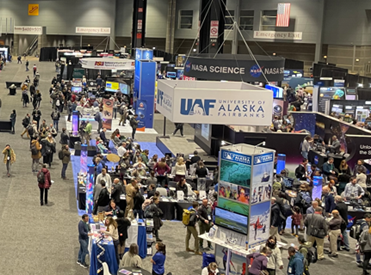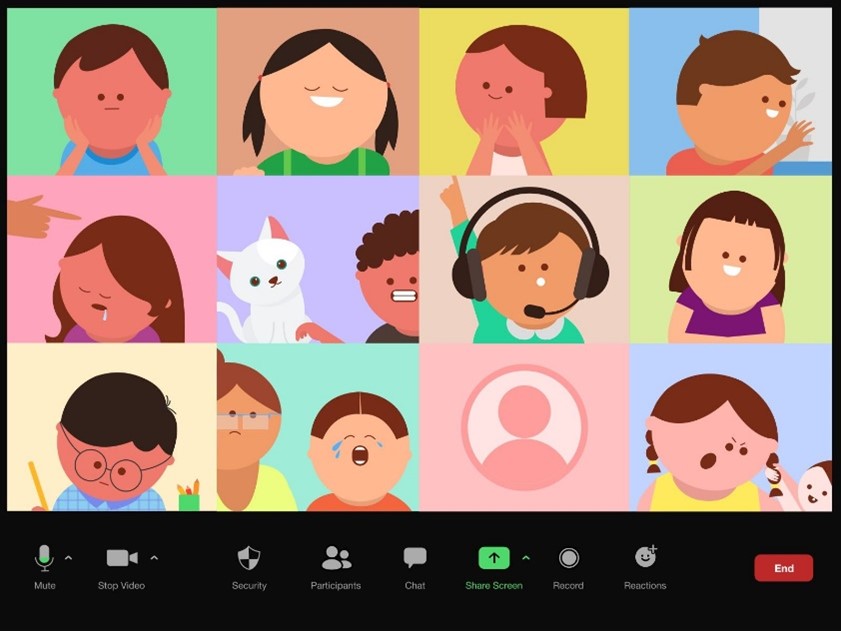At the end of last year, I attended the AGU (American Geophysical Union) Fall Meeting in Chicago. The attendance was pretty good, almost what it used to be pre-Covid, and interaction between visitors and the exhibitors was good. That’s particularly important to organizations like Isotopx that serve a very niche community with few opportunities to engage with them. I wasn’t able to attend the presentation sessions, but I hear that the in-person presentations were much more numerous than the virtual ones.

But the previous AGU Fall Meeting (December 2021, New Orleans) was in stark contrast to this, with significantly lower attendance, more virtual presentations, and a sense of unease that many attendees felt due to the evolution of the virus. The organizers did an amazing job to limit potential infection but unfortunately there were cases that originated at the meeting, including several from team Isotopx.
So where does that leave us? Will there be a return to fully in-person meetings, or will virtual meetings dominate? Or perhaps the most likely result is a hybrid of the two? I’m using this blog to discuss the relative merits of virtual and in person meetings, with specific focus on the types of conferences that we attend in our market sector.
Firstly, let’s explore virtual meetings. I’ve worked for some large multinational organizations before, large enough and well distributed enough that I had few colleagues in my time zone. That meant I was already familiar with the scourge of Zoom call and Teams meetings long before that virus came along. And more importantly I’d already learned the video conferencing protocols and social conventions – you know the kind of thing: muting before you sneeze, wearing something smart (at least on your top half).

But then I was forced, like so many parents, into home tuition of my children supported by Zoom lessons. I sincerely hope I never have to return to those days. In mid-2020 I found a whole new level of respect for teachers. Several years later and much of the business world is familiar with remote video-based interaction. So, what are the benefits?
An obvious benefit is that there is no risk of infection, unless you’ve downloaded a dodgy copy of Zoom. For some people this will be justification enough to adhere to virtual conferences from now on. Then there’s the equally significant factor of the reduced carbon impact. I’d like to think that most people in our industry are aware of the potential impact that their flights can have on climate change, and in many cases are trying to reduce that impact. I’ve certainly reduced the amount of international travel that I do now compared to ten years ago, and I now try to select my travel carefully to give the company and our customers the most benefit.

Another benefit of virtual conferences is that there is far less of a time commitment required, particularly due to the demands of travel. And since the start of the recent pandemic, many travelers have had poor travel experiences for a variety of reasons. My own experiences are that air travel in particular has lost a lot of its glamour in recent years.
There’s a tangible benefit for exhibitors as well, in that they don’t need to consider the costs incurred by shipping exhibition equipment and marketing material to the conference and back.
Now let’s contrast that with the benefits of in-person conferences. You will probably agree that the main benefit to be gained is through “real” human interaction, this cannot be replicated during a Teams call. There are surely many studies that prove that an interaction between several parties is more memorable and more likely to achieve an outcome if it takes place whilst in the room together rather than via computer screens (although my children’s generation may disagree!).

An adjacent benefit of in-person conferences is that attendees are more likely to retain their focus. I know this firsthand. Some years ago, I was involved in a couple of early “digital” conferences, both as an exhibitor and an attendee. I found it difficult to keep my concentration, especially due to other office distractions, and after a period of time dropped off from the digital conference. This doesn’t happen when you’re wandering through the poster hall at the Goldschmidt conference.
A further benefit, one that’s specific to exhibitors, is that in-person events present those exhibitors with a captive market. In other words, your potential customers can’t get away! Over the years I’ve come to realize the value of the conference attendees (by which I mean students) that come and chew the fat with you at your exhibition stand for a while, even those that don’t have a purchase in mind. These students could be the PI’s or lab managers of tomorrow, and it’s unlikely they would interact with the exhibitors at all at a virtual event.
And that leads neatly onto the fourth benefit – the social element. And no, I don’t mean the heavy drinking that some of the exhibitors do every evening. I mean those times when you randomly bump into an ex-colleague or lab mate from your doctorate. These events can also trigger positive outcomes and I embrace them keenly, as do many others. I spoke to a number of exhibitors at last year’s AGU to ask them what they missed the most about previous events. The answer was almost always “the cocktail hour”. If you’re not familiar with the premise, it refers to free drinks, served in the hall where the exhibitors are based. For many exhibitors it is the busiest time of the day, and could not be replicated in a virtual event.

I’ve now stated an equal number of potential benefits for virtual and in-person conferences. So which is it to be? Perhaps the answer lies in the middle. In the last 12 months or so I’m increasingly seeing the term “hybrid” applied to conferences and trade shows. These are designed to offer the best of both worlds, with talks given in-person and virtually, oftentimes both together in the same session. But actually, after a totally non-scientific poll of both academic attendees and exhibitors, the majority of people I asked were either returning to in-person events or looking forward to doing so. Zoom fatigue seems to be a real thing, and people really do want to be around other people.
If you have a comment about this post, or wish to point out an error or addendum, please let me know (Stephen.guilfoyle@isotopx.com).
